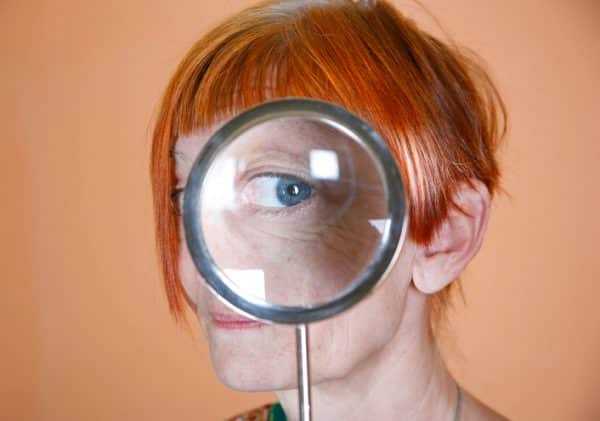As we age, our eyes undergo a number of changes. One of these involves the complex makeup of our tears. Our tears have 3 layers, with the first being the mucous layer that allows them to stick to the surface of our eyes. The second layer is the aqueous or liquid layer that bathes the eye in moisture. The third layer is the meibomian oil layer, which prevents the tears from evaporating too quickly.
As we get older, changes in these individual layers can cause problems. The tear glands can become less productive, especially in women after menopause. The shift of hormone levels results in inflammation in many glands in the body, including the tear glands. When they are inflamed, tear glands produce less lubrication, and this results in a paucity of the aqueous or liquid layer. The meibomian oil layer can also be affected by aging. This happens when the eyelid and face develop dilated blood vessels like those seen in people with rosacea. These dilated vessels can affect the production of oil from the oil glands in our eyelids, and this leads to a lack of oil on the surface of the tears. This leads to dry eye symptoms when the tear film breaks down too quickly.
The surface of our eyes are covered in nerve endings, and these are covered by surface cells. As long as those nerve endings are covered there are no symptoms of irritation. But when dry eye hits from either meibomian gland disease or lack of aqueous tears, the surface cells fall off and expose the underlying nerves. When the nerves fire we interpret it as eye irritation and pain.
Fortunately, there are ways to help people suffering from these two common causes of dry eye. Dilated blood vessels on the eyes can be closed with a special application of BBL, or Broad Based Light. When these BBL treatments are applied using a special connector on the eyelid margin, the oil glands flow freely again. Look at these two photos of the eyelid margin. One side has had the BBL treatment and then other has not. Notice the increase in dilated vessels on the untreated side? Now look at the staining of the eye surface in the same patient. The increased staining in the eye that didn’t have the BBL treatment indicates increased dry eye and nerve exposure.
For those suffering from the other cause of dry eye — the aqueous deficiency from the inflamed tear gland — there is also an effective treatment available. We can generate a substitute that’s similar to our body’s own by using blood drawn from our veins. This blood is placed into a centrifuge, in a special test tube that pushes down the red blood cells and allows liquid plasma and platelets to be filtered out. A special compounding pharmacy then takes this platelet-rich plasma and combines it with saline, creating a 45-day supply of PRP tears. These are nutrient rich and loaded with Vitamin K and epidermal and neurotrophic growth factors. When they are placed in the eye, they not only soothe them but also help to heal the surface.
These two treatments represent amazing new advances that are helping provide relief to many people suffering from dry eye symptoms.
